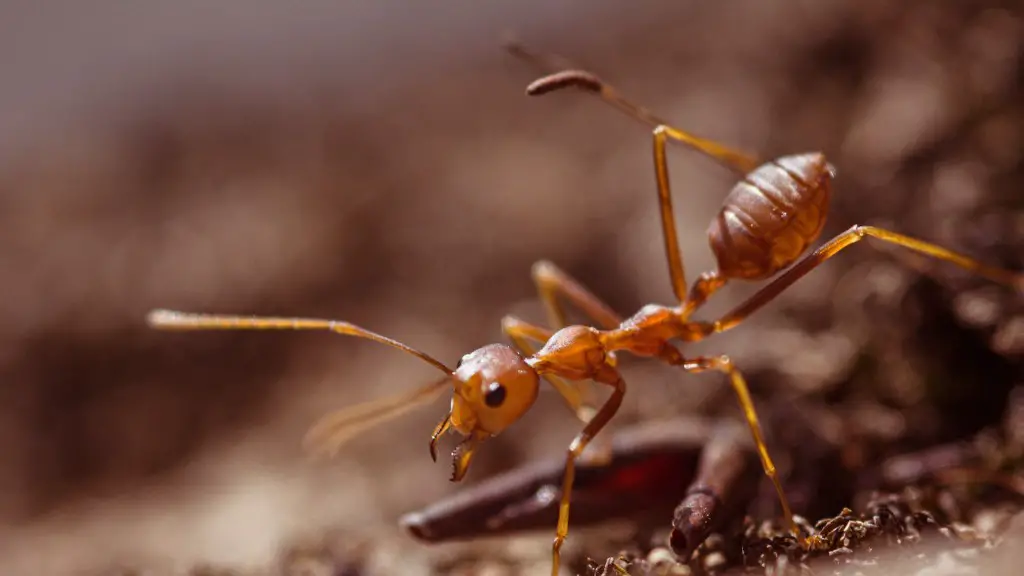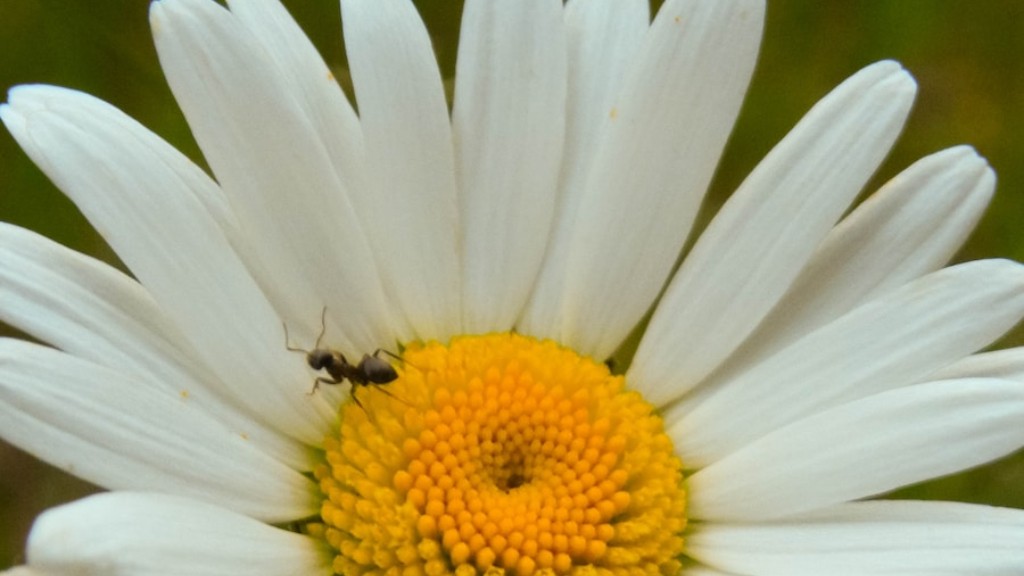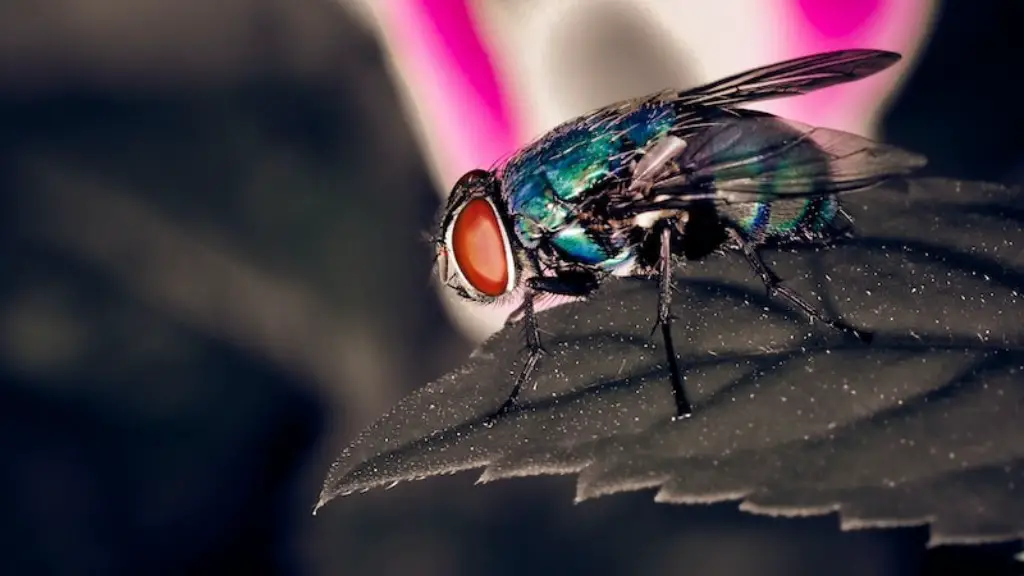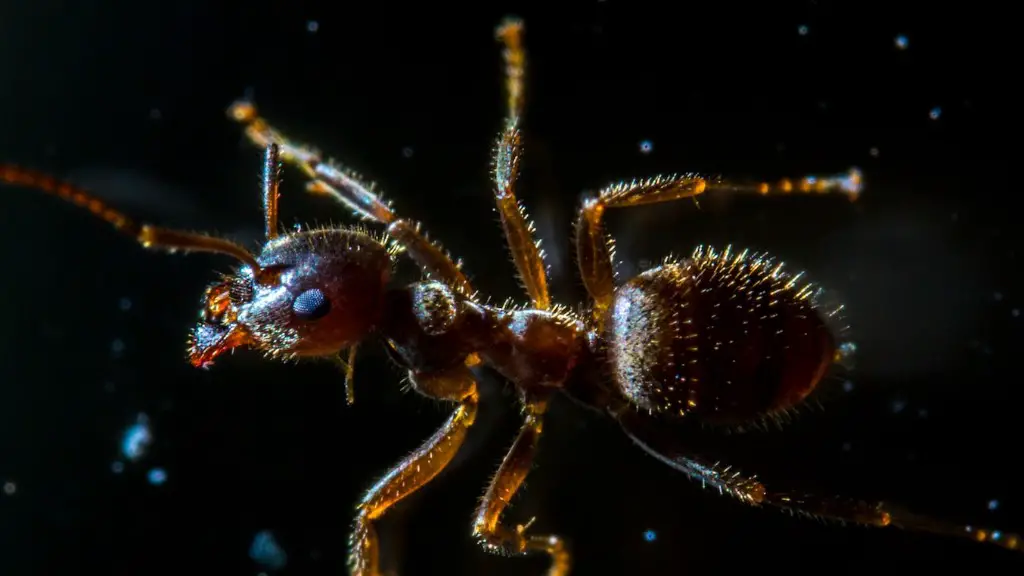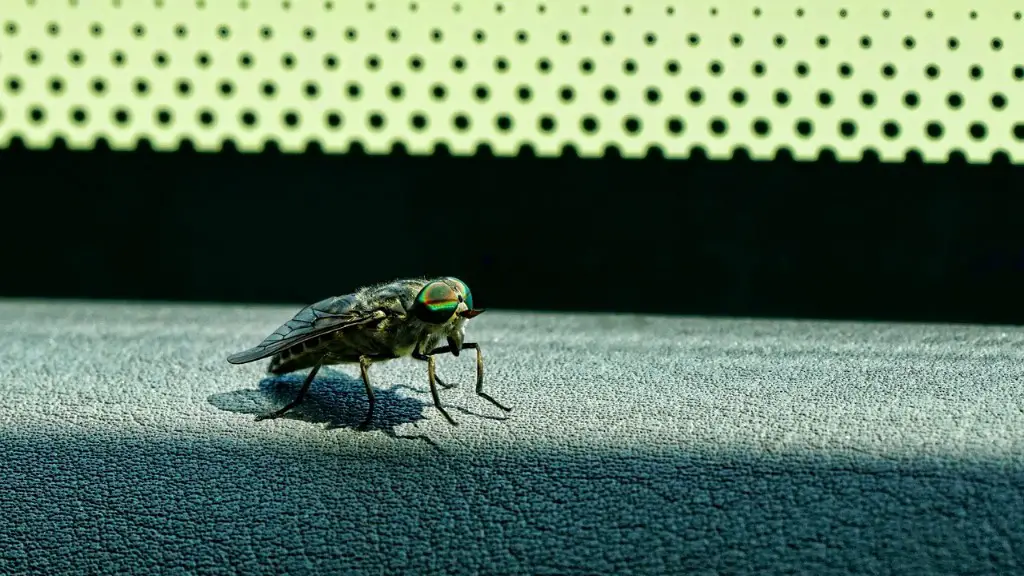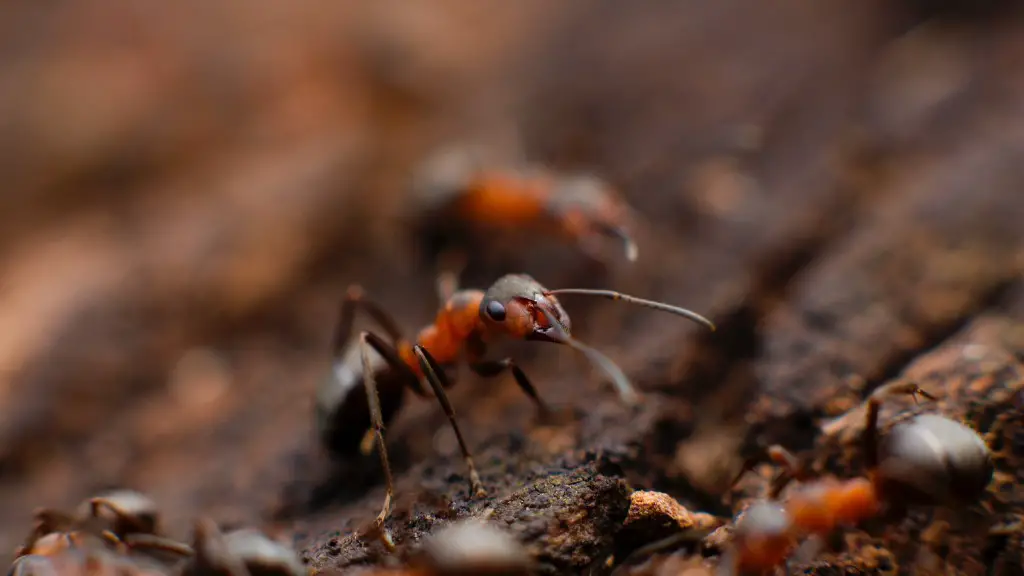Ants are some of the oldest species that have been around since prehistoric times and continue to be incredibly prolific today. The scientific name for ants is Formicidae, and there are roughly 12,500 species that have been identified. Despite their small size, ants are incredibly strong and adaptable creatures that have been able to survive for tens of millions of years.
The life cycle of an ant starts off with an egg. After a few days, the egg hatches into a small larvae, usually pictured as white and hairless. During its time as larvae, an ant is fed a special diet of adult ant saliva, which is believed to contain high amounts of proteins and other nutrients. The larvae then undergoes a process of metamorphosis, transforming into an adult ant. Some species of ants in the colony, such as worker and soldier ants, go through a pupal stage where their body changes from having wings to not having wings. In the end, the pupa then turns into a fully-grown adult ant.
The life cycle of an ant can vary depending on the species It usually takes anywhere from one to four weeks for an ant to go through its complete life cycle. However, in some cases, the larvae can remain dormant in their cocoons before they finally emerge as an adult ant – in which case the process can take more than four weeks. Interestingly, ant colonies are made up of a variety of ant ‘castes’, with each stage of the life cycle belonging to a different caste.
The maximum lifespan of an ant also depends on the species, with some ants living for just a few weeks and others living for up to 30 years. The queen of an ant colony is typically the longest-lived ant, with some queens surviving for up to 20 years. Interestingly, when the queen dies, the entire colony dies with it!
Ants are incredibly interesting creatures with a long history of surviving and adapting. While their life cycle and longevity may vary, one thing is for certain – these creatures are incredibly resilient, able to survive for millions of years in a wide range of habitats.
Life in an Ant Colony
Ants are part of a complex social network, living in colonies made up of hundreds or even thousands of members. The exact size of an ant colony depends on the species and its environment; in the wild, colonies may number in the millions. To function properly, ant colonies have to have a strict caste system, with each individual having a distinct role to play.
The colony is headed by a queen, who is responsible for laying eggs and setting up the colony’s infrastructure. The queen is typically the oldest and largest ant in the colony, and her lifespan is usually much longer than that of other ants. The other ants in the colony fall into three different categories – workers, soldiers, and drones. Workers are responsible for gathering food, constructing the colony’s nest, caring for larvae and pupae, and defending the colony from enemies. Soldiers are typically the largest ants in the colony, and their main purpose is to protect the colony from predators. Drones are male ants that are responsible for mating with the queen and producing new offspring for the colony.
The Behavior of Ants
Ants have a variety of fascinating behaviors that make them unique in the insect world. For example, ants are well-known for their use of pheromones, which are chemical trails they leave behind to communicate with each other. These pheromones can be used to mark their territory, find food sources, or even send alarm signals to other ants.
Another interesting behavior of ants is their ability to cooperate and work together as a single unit. Ants have been found to cooperate in tasks such as building structures and defending the colony. This level of cooperation helps ants to survive and thrive in even the harshest of environments.
Finally, ants have an incredible sense of direction and memory. Even if they get lost in their environment, ants are able to find their way home by following their chemical trails or remembering landmarks. This allows them to forage for food, avoid predators, and return to their nest without getting lost.
Predation and Symbiosis
Ants are preyed upon by a wide variety of animals, from reptiles to birds and mammals. Larger species of ants are especially vulnerable to predation, as their large size makes them a tasty target for many predators. Some species of ants have evolved defensive strategies, such as swarming and biting, to ward off predators.
Ants also engage in many forms of symbiosis with other species. For example, some ant species have developed a mutualistic relationship with certain species of acacia trees. The ants act as protectors of the tree, keeping away herbivores and other predators, while the tree rewards them with food and shelter.
Adaptation in Ants
Ants are widely recognized for their ability to adapt to different environments. Through millions of years of evolution, ants have been able to develop unique strategies for surviving in almost any type of terrain. This includes adapting to temperature fluctuations, changes in water levels, and fluctuations in food sources.
Ants also have the remarkable ability to locate food sources from long distances. This is achieved through their use of pheromones, which they spread in the environment to mark out trails leading to food sources. Once the food sources have been located, the ants use the same pheromone trails to lead other ants back to the food source.
The Impact of Ants on Our Environment
Ants play a key role in the environment by maintaining the balance of the food chain and breaking down organic materials. As predators, they help to regulate the population of other species and prevent overpopulation. Additionally, as decomposers, they help to break down organic material, thus releasing valuable nutrients back into the environment.
Ants also help to aerate the soil, which helps to increase water absorption and reduce erosion. They are a key species for the maintenance and restoration of ecosystems, as they help to regulate the populations of other species and the release of essential nutrients into the environment.
Finally, ants also have many economic benefits. For example, ants are used in agriculture to help increase crop yields and reduce pest infestations. Ants also provide valuable food sources for humans, either as food directly or indirectly through their role in agriculture.
The Relationship Between Man and Ants
The relationship between man and ants is an old, complex one. Ants have been important to humans throughout history, providing them with food, medicine, and other resources. In some cultures, they are even seen as having spiritual significance. While ants can also be seen as pests, they can also be beneficial, depending on the species.
Today, ants are still used for a variety of purposes – from pest control to agriculture and even medical research. They are harvested for their venom, which is used to make antivenom for the treatment of insect bites and stings. Ants are also used in scientific experiments to study the behavior of other animals and even human behavior.
Overall, ants have been around for millions of years and continue to play an important role in our environment and our lives. They are incredibly resilient creatures and understanding their behavior can help us to better understand our own.
What Can We Do to Help Ants
To ensure that ants are around for millions of years to come, it’s important that we take measures to protect them. One way to do this is to reduce our impact on their natural habitats. This can be done by limiting our activities in their habitats, such as construction, burning, and major agricultural activities.
Another way to help protect ants is to limit our use of pesticides. Pesticides can be very harmful to ants and other species in the environment, so it’s important to take steps to reduce our use of them. For example, we can plant native plants that are less likely to attract pests and practice Integrated Pest Management.
Lastly, it’s important to be mindful of ants when engaging in recreational activities. To minimize our impact on their habitats, we can be sure to practice responsible camping and littering practices, refrain from using insecticides in the wild, and avoid destroying their nests or trails.
Conclusion
Overall, ants are ancient and resilient creatures that have successfully survived in a variety of habitats for millions of years. They play an important role in the environment and can even be beneficial to humans in certain ways. To ensure that they are around for many more years to come, it’s important that we take steps to protect them. By understanding their behavior and respecting their habitats, we can ensure that ants continue to play an important role in the planet’s delicate balance.
